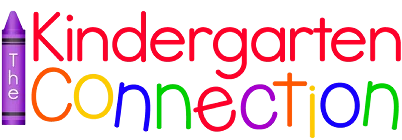The Importance of Classroom Consistency in Pre-K & Kindergarten
This post contains affiliate links for your convenience. View our full disclosure policy here.
Do you feel like sometimes you’re giving too many reminders? Do you find yourself feeling like you’re “nagging” or maybe you are noticing frequent issues with behavior? It’s kind of amazing how many different ways we can say the same, exact thing. It can be completely frustrating, especially when we only want to get our point across. If you find yourself among the “Repeater Tribe,” then keep reading to hear about the importance of classroom consistency in Pre-K & Kindergarten and how it can make ALL the difference!
*For more tips on how to create a positive AND playful learning environment in your classroom, be sure to join us in P.L.A.Y. (Playful Learning All Year)!
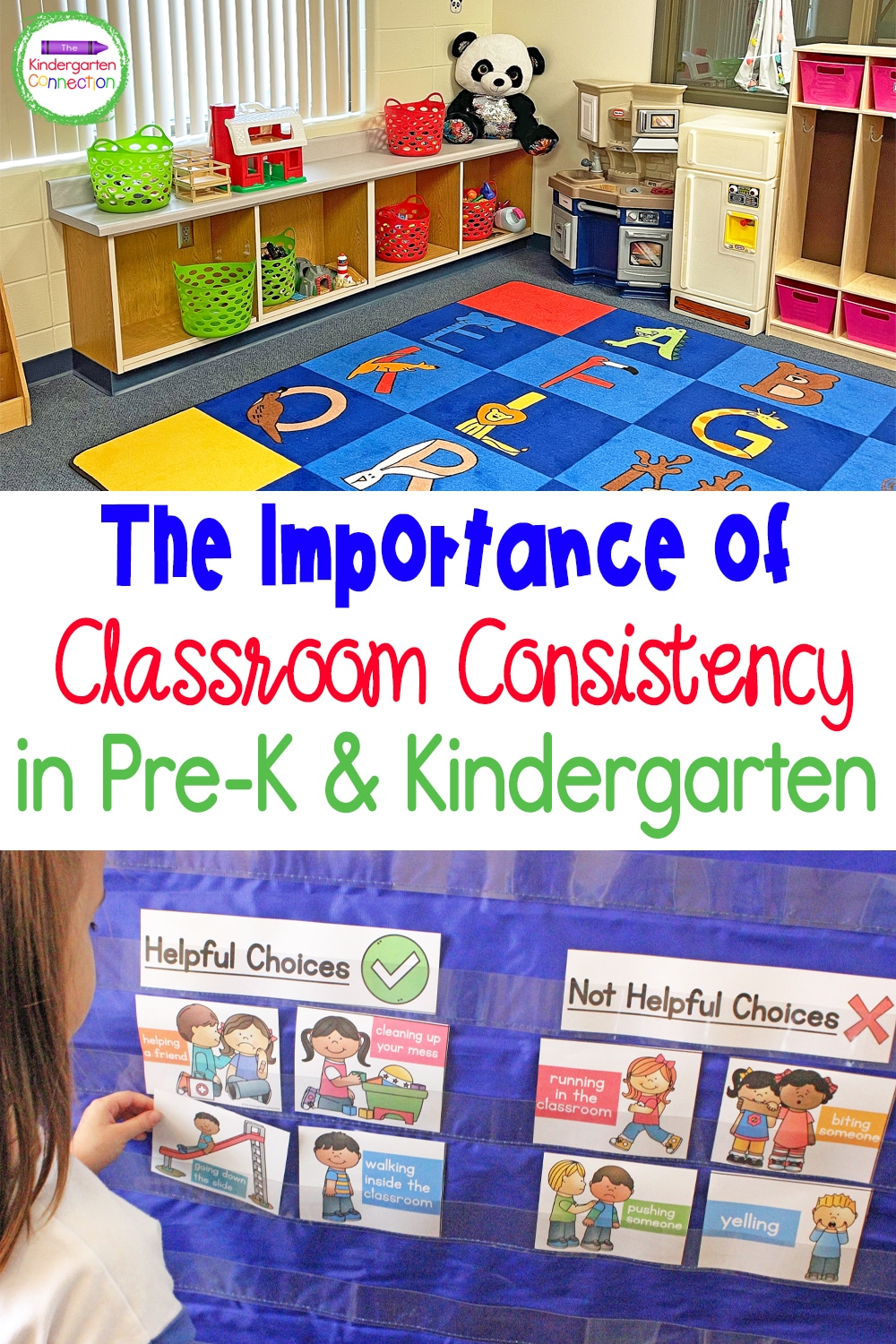
The Importance of Classroom Consistency in Pre-K & Kindergarten
It’s very tempting at the beginning of the year to want to give a lot of chances or reminders because it’s all new. Our students are new, and most likely they are new to school – so we want to give them chances to be fair. Plus, we want our students to really love school, right?
But… if at the beginning of the year, you have already taught solid routines and you have made your expectations known to your students, and you find yourself still reminding and reminding and reminding – then you will likely be doing that all year. That definitely doesn’t sound like how you want the school year to go. It sounds a little scary, right?
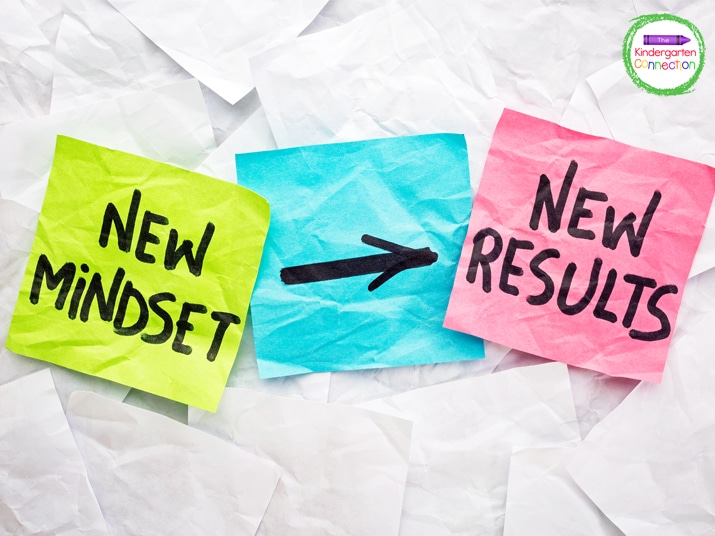
We know that kids feel secure when expectations and routines are known to them and when those routines and expectations are kept. When kids feel secure they are going to have a better experience in the classroom.
The key is to follow through!
Consistency and follow-through are so important. As a teacher, to have consistency and follow-through, we have to make sure that “we say what we mean and mean what we say.”
I want to take some time to show you an example. Imagine this:
Your students have all learned how to use the community supplies and things are going pretty well. All of a sudden, a student starts to break crayons, purposefully snapping them. You realize this and you ask them to stop. The student doesn’t stop, they just keep snapping the crayons.
It’s so tempting to ask again because it seems like a nice thing to do. So, what’s wrong with that?
Well, repeating yourself over and over tends to portray that when you say something the first time students can ignore it because you’re going to say it again. And perhaps again. Each time you are giving too many reminders, you will get the same results (broken crayons and frustrations from you).
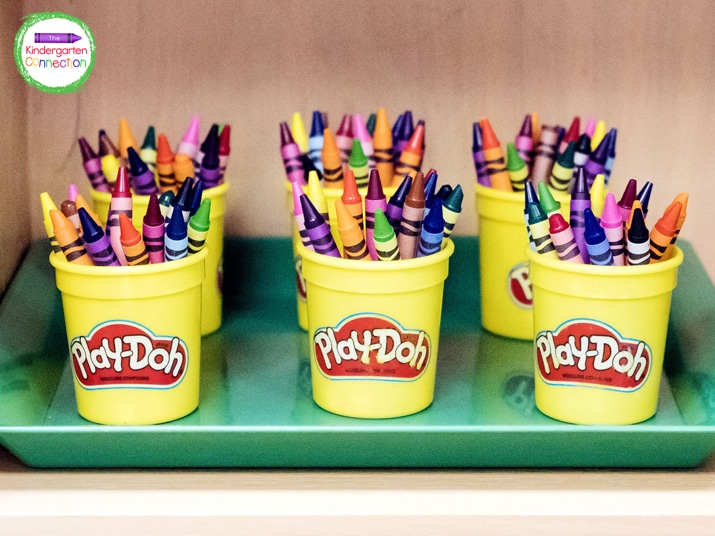
Have you been there? Me too! It’s okay because what matters is what we do next.
I know you’re wondering, “So what do I do instead?”
You can restate the request nicely, as well as what will happen if it isn’t followed. “Please stop breaking your crayons. If you break them again, I will be in charge of your crayons today.” (Or whatever you decide.) If the student breaks them again, then FOLLOW THROUGH kindly – but firmly. This is the hardest part and may result in initial upset, but this is the MOST important part.
Let’s say it’s now a week later, and the same student is breaking crayons. “I notice you’re breaking crayons. What happens when you do that?” Because you have been repeatedly consistent, they know the answer and believe you, and are more likely to stop.
This also means you’re developing trust with that student which will carry over into other areas. For instance, they believe you when you say you will help them with something, or help them solve a problem, etc. – because they have learned you say what you mean and mean what you say. See how this win spills over into other areas?
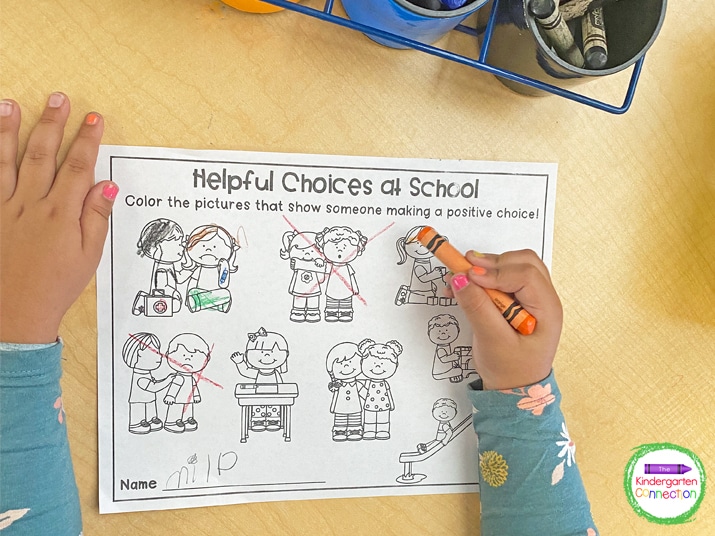
This does NOT happen after once, twice, or maybe even five times. It can take weeks and it is hard. Sometimes it seems easier to remind a student again than to follow through. But, the end result is so worth it. This is just one example of a situation that we can relate to in Kindergarten – but there are several more I’m sure you can think of! The point is, consistency and follow through makes your students feel secure and keeps you feeling happier, too.
Want to stress less with even more “must-try” tips while learning how to create a “Playful Learning” environment?
(even if you “aren’t allowed to play”)
If you’re wanting to incorporate playful learning, free-flowing centers, effective routines, and more in your Pre-K or Kindergarten classroom, then you’ll definitely want to join us in P.L.A.Y. (Playful Learning All Year)!
This course is a deep dive into practical ways that you can create a playful learning environment in your classroom. Be sure to request an invitation so you’re the first to hear when the virtual doors open!
- Find It! Writing Centers for Pre-K & Kindergarten - March 29, 2024
- Spring Counting Activities for Pre-K & Kindergarten - March 22, 2024
- Teacher Tips for How to Deal with a Loud Classroom - March 19, 2024

